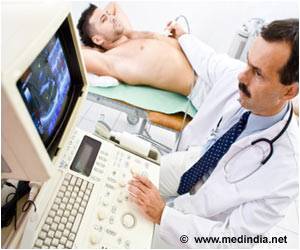Visualizing the tongue's shape and movement using ultrasound technology can help children with difficulty pronouncing r sounds, suggests a small study.

The "r" sound is one of the most frequent speech errors, and can be challenging to correct. For other sounds – such as "t" or "p" – speech pathologists can give clear verbal, visual or tactile cues to help children understand how the sound is created. "R" is difficult to show or describe in an easy-to-understand fashion.
In addition, most speech sounds are produced in the same way, but with "r," normal speakers use widely different tongue shapes to create the sound. The two primary strategies to create the "r" sound include a retroflex tongue shape, where the tongue tip is pointed up, and the bunched tongue shape, where the tongue tip is pointed down and body of tongue bunches up toward the top of the mouth.
Up to 10 percent of children have speech sound disorders, according to the National Institutes of Health. Some children respond well to conventional forms of speech therapy, but others have errors that persist despite their therapists' best efforts. A growing body of evidence suggests that treatment incorporating visual biofeedback, which uses various technologies to create a dynamic visual representation of speech, could fill this need.
"The idea that you could get around the challenges with 'r' sounds by showing children their tongues as they are talking is really appealing to clinicians," says Tara McAllister Byun, an assistant professor in NYU Steinhardt's Department of Communicative Sciences and Disorders and the study's lead author. "That's what ultrasound technology lets us do."
Linguists have used ultrasound in the past to study basic functions of speech, and in recent years, speech pathologists have begun exploring using ultrasound to treat children with speech errors. An ultrasound probe – similar to ones used in cardiac and tissue imaging – is held under the chin, and sound waves capture real-time images of the tongue. The images provide both the child and speech pathologist with information about the tongue's position and shape.
Advertisement
Several case studies and small studies suggest that ultrasound biofeedback can successfully correct "r" speech errors. Byun and her colleagues set out to gather systematic evidence on the effectiveness of the treatment, studying eight children with difficulty pronouncing "r" sounds. Seven of the eight had previous speech therapy that was unsuccessful.
Advertisement
However, while trying to create a bunched tongue, one child stumbled upon a retroflex tongue shape and was able to improve her "r" sound. As a result of her success, the researchers altered their study design to allow participants to choose their own tongue shape, with individualized guidance from speech language pathologists.
A different four children participated in the second study over an eight-week period. Using ultrasound to visualize their tongues, all four participants in the second study showed significant improvement in their "r" sounds.
"Our second study offers evidence that when flexibility is given to choose a tongue shape, rather than a one-size-fits all approach, ultrasound biofeedback treatment can be a highly effective intervention for children with trouble pronouncing 'r' sounds," Byun says.
The researchers noted that the two studies were not a controlled comparison, thus additional systematic research is needed before drawing strong conclusions about the importance of individualized tongue shapes.
Source-Eurekalert












